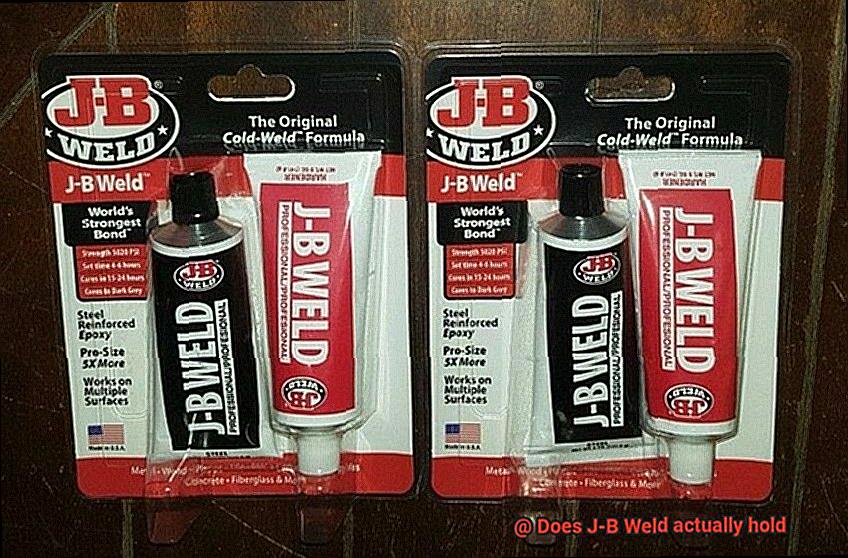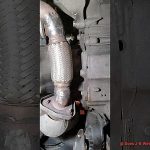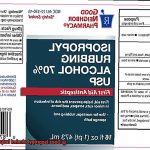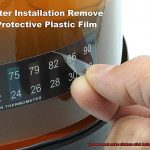Today, we’re diving into the wild world of J-B Weld. You know, that stuff that promises to stick anything and everything together with its super strength.
We’ve all been in those moments of desperation, desperately searching for a glue that won’t let us down. And that brings us to the burning question: does J-B Weld actually hold?
We’ve all heard the rumors about its mind-blowing power, but is it all just talk? Well, buckle up because we’re about to dig deep into this legendary adhesive and find out if it’s truly worth its weight in gold.
Get ready to have your mind blown.
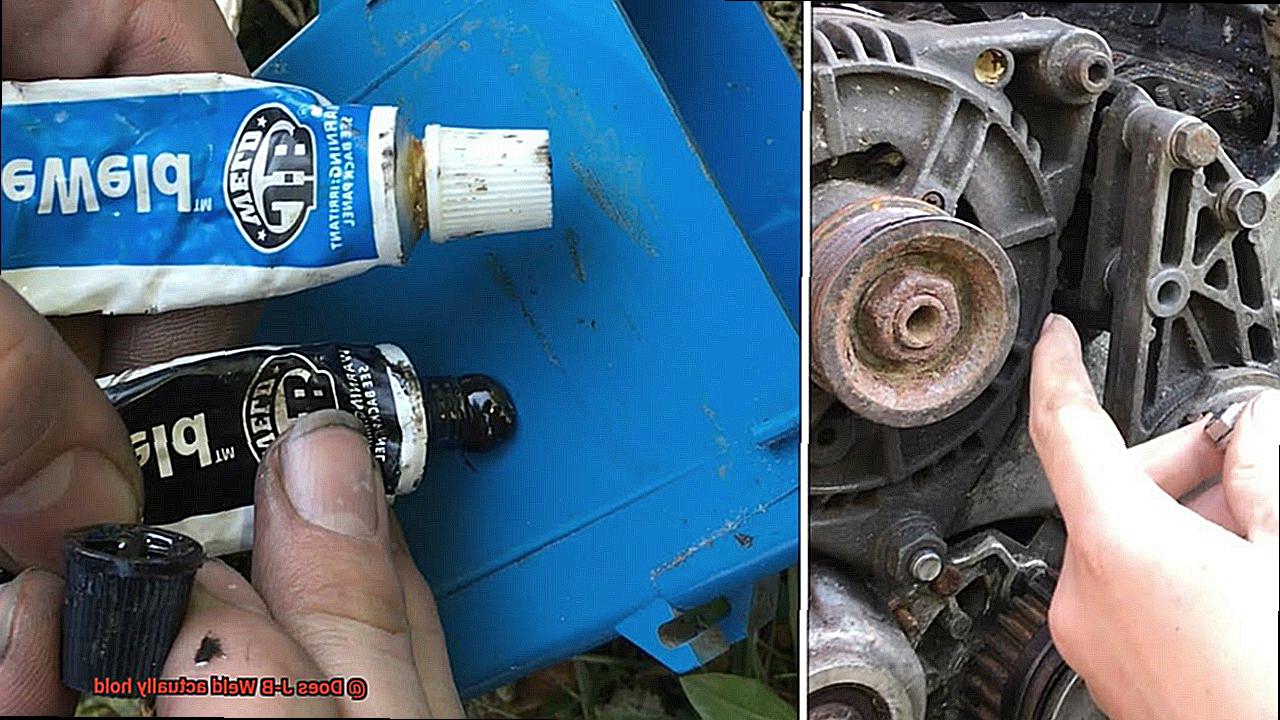
Factors Affecting the Strength of Bond: Surface Preparation, Application Technique, and Curing Time
Contents
- 1 Factors Affecting the Strength of Bond: Surface Preparation, Application Technique, and Curing Time
- 2 Benefits of Using J-B Weld: Durability and Reliability
- 3 Potential Drawbacks of Using J-B Weld
- 4 Tips for Successfully Using J-B Weld
- 5 Different Materials That Can Be Bonded with J-B Weld
- 6 How to Choose the Right Epoxy Adhesive for Your Project
- 7 Professional Advice for Heavy-Duty Applications or Critical Bonding Needs
- 8 Conclusion
J-B Weld is a renowned epoxy adhesive that offers exceptional holding power and durability. However, to ensure a strong bond, it is crucial to consider factors such as surface preparation, application technique, and curing time. In this article, we will delve into how these factors influence the strength of the bond when using J-B Weld.
Surface Preparation:
Proper surface preparation is essential for achieving optimal adhesion with J-B Weld. Before applying the epoxy, it is important to clean the surfaces thoroughly to remove any contaminants like grease, oil, dirt, or rust. Cleaning agents like degreasers or solvents can be used.
Additionally, roughening the surfaces with sandpaper or a wire brush creates a better bonding surface for J-B Weld. For example, when bonding two metal surfaces together, using sandpaper to create a rough texture allows the epoxy to grip the surface more effectively.
Application Technique:
The way you apply J-B Weld plays a vital role in determining the strength of the bond. It is crucial to follow the manufacturer’s instructions carefully. Apply the epoxy evenly on both surfaces that need to be bonded. Uneven application or excessive use of the adhesive can weaken the bond.
To achieve maximum adhesion strength, it is recommended to use the specified mixing ratio and ensure thorough mixing of the two components before applying them.
Applying pressure or clamping the bonded surfaces together during curing helps enhance the bond’s strength. For instance, when bonding two pieces of wood together, using clamps to hold them firmly in place while the epoxy cures ensures a strong and secure bond.
Curing Time:
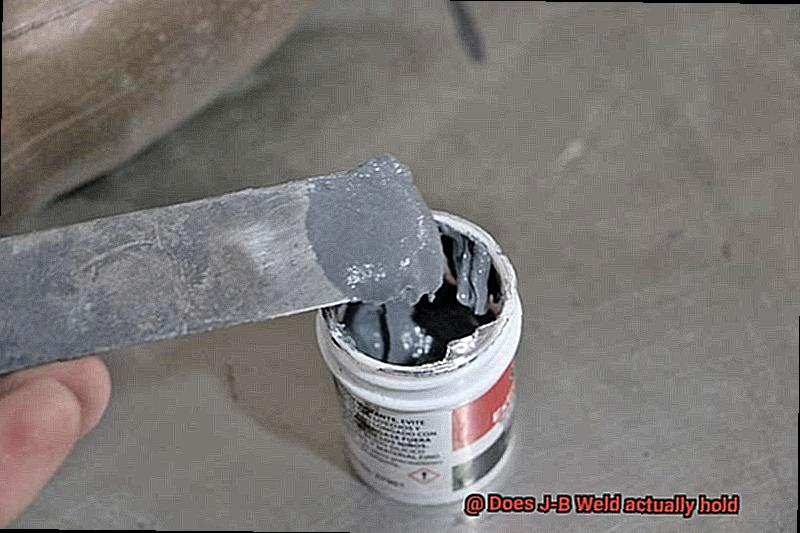
Curing time refers to the duration required for J-B Weld to fully harden and develop its optimal strength. The recommended curing time varies depending on factors such as temperature, humidity, and the specific J-B Weld product being used.
It is crucial to allow sufficient curing time as specified by the manufacturer for the adhesive to reach its maximum strength. Rushing the curing process can result in weaker bonds that may fail under stress. Keep in mind that colder temperatures or high humidity conditions may require longer curing times. For example, in a cold environment, it may be necessary to extend the curing time by a few hours to ensure a strong bond.
Conclusion:

In conclusion, achieving a strong bond with J-B Weld involves proper surface preparation, application technique, and curing time. Thoroughly clean the surfaces and roughen them for better adhesion. Follow the manufacturer’s instructions for application, including mixing ratio and even pressure application.
Allow sufficient curing time to ensure the bond reaches its maximum strength. By considering these factors, you can ensure successful bonding projects with J-B Weld, creating durable and reliable connections.
Benefits of Using J-B Weld: Durability and Reliability
When it comes to bonding materials together, no other adhesive surpasses the reputation of J-B Weld. This two-part epoxy adhesive has become synonymous with exceptional durability and reliability in various conditions. Whether you’re a DIY enthusiast or a professional craftsman, J-B Weld is the go-to solution for all your bonding needs.
Here, we will delve into the benefits of using J-B Weld, including its ability to withstand extreme temperatures, resistance to chemicals and impact, versatility in bonding different materials, and its functionality as both an adhesive and filler.
Unmatched Temperature Resistance:
J-B Weld is not your ordinary glue; it is engineered to excel in extreme temperatures ranging from -67°F to 500°F (-55°C to 260°C). This exceptional heat resistance ensures that your bonded materials remain intact, even in extreme indoor or outdoor environments where temperature variations are common.
Chemical and Impact Resistance:
J-B Weld’s adhesive properties are impervious to water, chemicals, and harsh solvents. This resistance ensures that your bonds remain secure and unaffected, providing long-lasting strength in challenging environments. Additionally, J-B Weld is resistant to impact and vibration, making it an ideal choice for applications that require stability and durability.
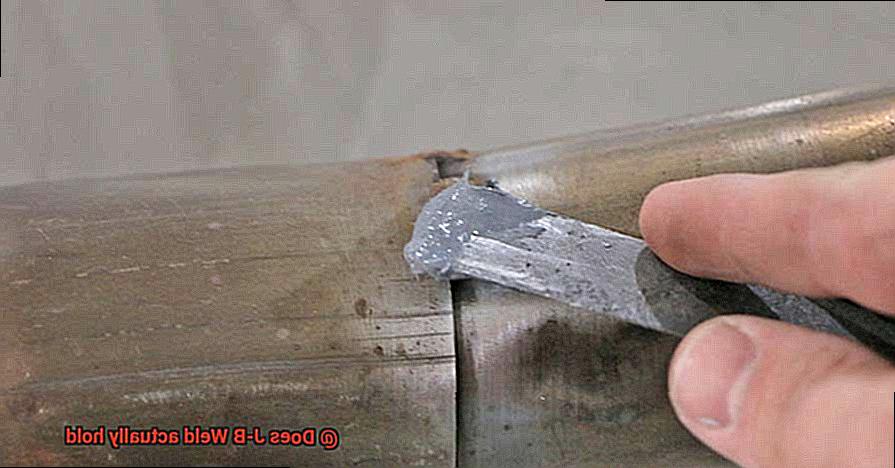
Versatility at Its Best:
One of the greatest advantages of using J-B Weld is its versatility. It can be used on a wide range of materials such as metal, wood, plastic, ceramics, and more. This versatility makes it an indispensable tool for various industries like automotive, marine, plumbing, and construction. With J-B Weld in your toolkit, you can confidently tackle any bonding project that comes your way.
Filling Gaps with Ease:
J-B Weld not only bonds materials together but also serves as a reliable filler. It effortlessly fills gaps and holes in surfaces, providing additional strength to the repaired area. This unique feature ensures a professional finish while reinforcing the structure, making it ideal for repairs and restorations.
Efficient Curing Time:
J-B Weld offers a relatively short curing time, allowing users to complete their projects efficiently. However, it is crucial to exercise patience and allow sufficient curing time before subjecting the bonded surfaces to stress or load. By following the recommended curing process, you can achieve maximum strength and durability with J-B Weld.
Potential Drawbacks of Using J-B Weld
J-B Weld is a renowned adhesive that has gained popularity among DIYers and professionals due to its strength and versatility. However, it is essential to consider the potential drawbacks associated with using J-B Weld. This article will explore the limitations and challenges users may encounter when utilizing this adhesive.
Messy Application:
One primary drawback of J-B Weld is its thick consistency, making it messy and challenging to work with. Achieving an even and smooth application can be difficult, leading to uneven bonds or excessive adhesive seepage from joints. To mitigate this issue, users must exercise caution and take their time during the application process.

Surface Preparation:
For optimal adhesion, J-B Weld requires proper surface preparation. Failure to clean, dry, and remove grease or oil from surfaces may result in weaker bonds. Consequently, users may need to allocate additional time and effort for thorough surface preparation. However, attention to detail in this regard is crucial for ensuring successful bonding.
Long Curing Time:
Although J-B Weld sets relatively quickly, it takes a significant amount of time to fully cure and reach maximum strength. Depending on the specific product and conditions, curing may take several hours or even days. This extended curing period can inconvenience users who require immediate bonding solutions.
Limited Heat Resistance:
J-B Weld is not recommended for high-temperature applications due to its limited heat resistance. Prolonged exposure to high temperatures can cause the adhesive to weaken or fail, making it unsuitable for certain projects such as automotive engine repairs. Understanding J-B Weld’s temperature limitations is essential before utilizing it in such applications.
Challenging Removal:
Once fully cured, J-B Weld becomes incredibly strong and durable. While this property is advantageous for its intended purpose, it poses challenges when removal is necessary without damaging surrounding surfaces. Users should carefully consider this factor before using J-B Weld on objects or surfaces that may require future repairs or modifications.
Tips for Successfully Using J-B Weld
J-B Weld is a versatile adhesive that can be used for a wide range of projects. Whether you need to bond metal, wood, plastic, or other materials, J-B Weld can provide a strong and durable bond. To ensure the best results when using J-B Weld, here are some helpful tips to keep in mind.
Surface Preparation
First and foremost, surface preparation is key. Before applying J-B Weld, make sure the surfaces you are bonding are clean, dry, and free from any contaminants such as oil, grease, or dirt. This can be achieved by using a degreaser or rubbing alcohol to thoroughly clean the surfaces. By starting with a clean surface, you will enhance the adhesion of the J-B Weld and maximize its holding power.
In addition to cleaning the surfaces, roughening them up can further improve the bond. You can use sandpaper or a wire brush to create more surface area for the adhesive to grip onto. This will help create a stronger bond between the materials being bonded.
Proper Mixing
Properly mixing the two components of J-B Weld is crucial for achieving a strong bond. The epoxy comes in two tubes – one containing the resin and the other containing the hardener. It is important to follow the manufacturer’s instructions and mix the two components in the correct ratio. Thoroughly blend them together until they are completely blended to ensure a proper chemical reaction and optimal bonding strength.
Application Methods
When applying J-B Weld, it is important to use enough adhesive to ensure full coverage on both surfaces. However, be mindful of excess adhesive as it can create a mess and may not cure properly. Use a spatula or putty knife to spread the adhesive evenly on both surfaces.
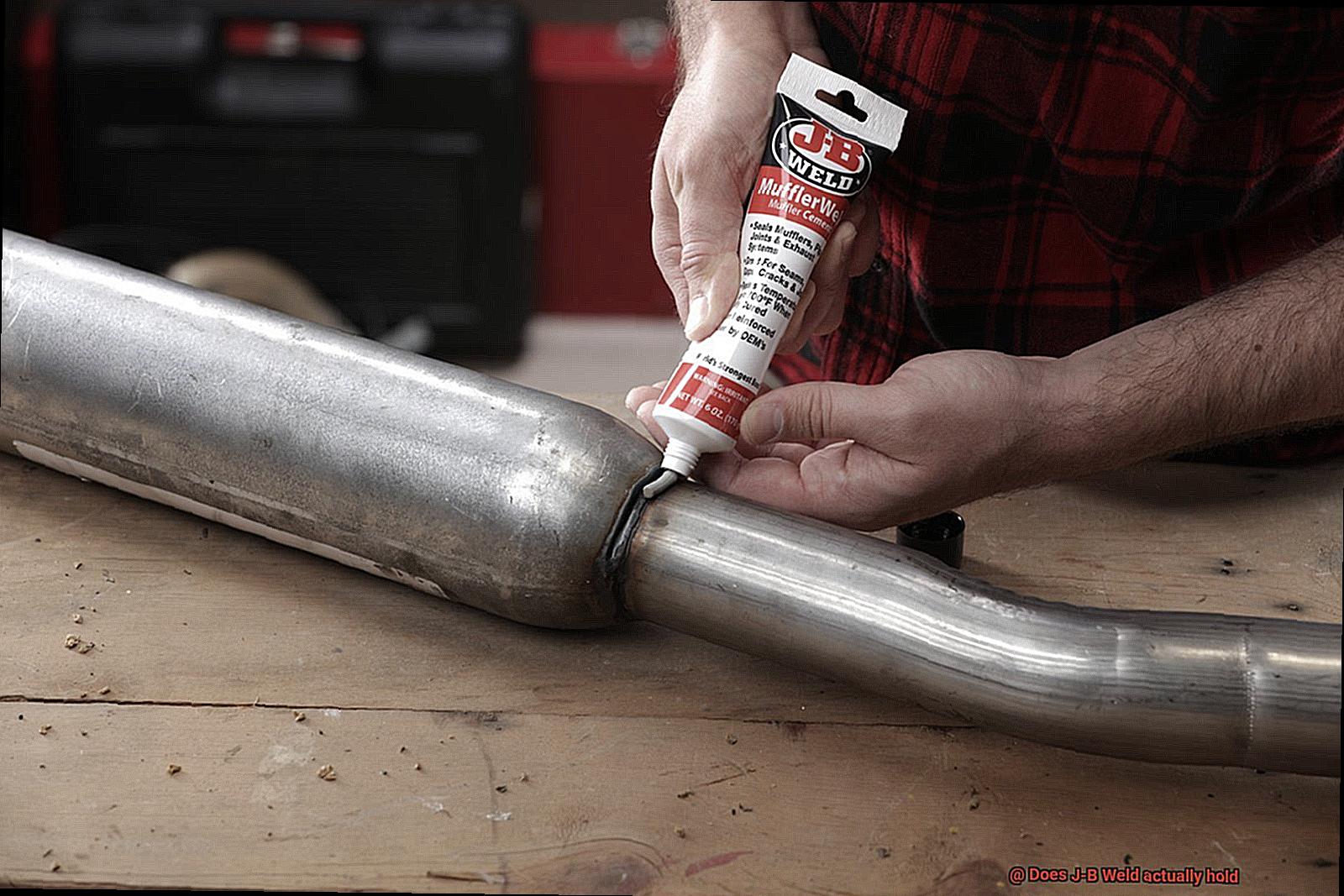
It is also recommended to apply the J-B Weld as quickly as possible after mixing to ensure optimal bonding strength. Once applied, it is important to clamp or hold the bonded surfaces together until the adhesive sets. This will help achieve a tight and secure bond. The curing time can vary depending on factors such as temperature and humidity, so it is advisable to refer to the instructions provided by the manufacturer.
Finishing Touches
After the J-B Weld has fully cured, you may need to do some finishing touches to ensure a seamless and professional-looking result. You can use sandpaper or a file to smooth out any rough edges or excess adhesive. This will not only improve the appearance of your project but also make it more comfortable to handle.
If any gaps or voids are present in the bond, additional layers of J-B Weld can be applied to strengthen it further. However, it is important to allow each layer to fully cure before applying subsequent layers. This will ensure a strong and reliable bond throughout the entire project.
Troubleshooting
It is important to note that J-B Weld may not work well on certain materials such as polyethylene or polypropylene plastics. It is always recommended to test the adhesive on a small inconspicuous area before using it on larger projects.
If you encounter any issues during the bonding process, such as weak adhesion or curing problems, it is best to consult the manufacturer’s troubleshooting guide or contact their customer support for assistance. They will be able to provide guidance and solutions based on your specific situation.
Different Materials That Can Be Bonded with J-B Weld
Today, we embark on a journey through the different materials that can be bonded with this remarkable adhesive. Get ready to unleash your inner craftsman or craftswoman.
First and foremost, let’s talk about metal. J-B Weld is renowned for its exceptional bonding strength on various metal surfaces. Whether it’s steel, aluminum, cast iron, or brass, this adhesive can repair cracks, fill gaps, and bond metal parts together with astonishing proficiency.
Next on our list is plastic. J-B Weld offers specific formulas designed to bond different types of plastic, including ABS and PVC. So whether you’re fixing a cracked plastic tool or working on an intricate fiberglass project, rest assured that J-B Weld has got your back. Just remember to check the product label or manufacturer’s guidelines to ensure compatibility.
For all you wood lovers out there, rejoice. J-B Weld can work wonders on wood surfaces as well. It can seamlessly repair cracks in furniture or join wooden parts together for a sturdy structure. However, it’s worth noting that for certain woodworking projects, traditional techniques or specialized wood adhesives may be more suitable.
Calling all ceramic enthusiasts. Listen up. J-B Weld’s high temperature-resistant formula makes it perfect for bonding ceramic materials. Whether you’re fixing a beloved pottery piece or reattaching broken porcelain, this adhesive forms an unyielding bond that can withstand heat and moisture.
Now, let’s address the delicate matter of glass. While J-B Weld isn’t specifically designed for bonding glass, it can still be employed in certain situations. Do bear in mind that glass is a brittle material and may require additional reinforcement or specialized glass adhesives for a dependable bond. J-B Weld could prove invaluable for small repairs or attaching non-load-bearing objects to glass surfaces.
But wait, there’s more. J-B Weld can also be used on other materials such as concrete, fiberglass, and even stone. Just remember to consider the specific properties of the material and consult the manufacturer’s guidelines to ensure compatibility and achieve the finest bond possible.
And there you have it, my friends – a comprehensive overview of the different materials that can be bonded with J-B Weld. Whether you’re working on metal, plastic, wood, ceramic, or even glass, this adhesive is your trusty sidekick. Just remember to prepare the surfaces diligently, follow the instructions meticulously, and revel in the satisfaction of a job well done.
How to Choose the Right Epoxy Adhesive for Your Project
Choosing the right epoxy adhesive for your project is crucial to ensure a strong and durable bond. There are several factors to consider when making this decision.
Material Compatibility:
The type of materials you will be bonding is a key factor in selecting the right epoxy adhesive. Different adhesives are formulated to work best with specific materials, such as metal, wood, plastic, or glass.
For example, if you are bonding metal surfaces, you would need an epoxy adhesive specifically designed for metal bonding. Using the wrong adhesive can result in a weak bond or even failure.
Strength Requirements:
Consider the strength requirements of your project. Epoxy adhesives come in different strengths, ranging from standard strength to high strength. If you are working on a heavy-duty application or require a strong and durable bond, opt for an epoxy adhesive with a higher strength rating.
Working Time and Cure Time:
The working time and cure time of the epoxy adhesive are important considerations. Working time refers to the amount of time you have to apply and position the adhesive before it begins to set. Cure time refers to how long it takes for the adhesive to fully harden and reach its maximum strength.
Some adhesives have longer working times, allowing for more precise positioning, while others have faster cure times, enabling quicker project completion.
Specific Needs or Constraints:
Consider any specific needs or constraints of your project. For example, if your project involves bonding materials that will be exposed to high temperatures or chemicals, select an epoxy adhesive that can withstand these conditions without compromising the bond. There are specialized formulations available to provide resistance to temperature extremes, moisture, or chemicals.
Application Method:
Lastly, consider the application method that suits your project best. Epoxy adhesives come in different forms such as two-part epoxies, one-part epoxies, and epoxy putties. Two-part epoxies require mixing before use and are typically stronger and more durable. One-part epoxies are easier to use but may have less strength. Epoxy putties are ideal for filling gaps and cracks.
Professional Advice for Heavy-Duty Applications or Critical Bonding Needs
Look no further than J-B Weld, the superhero of adhesives. In this ultimate guide, we’ll provide you with professional advice on how to harness the full power of J-B Weld for heavy-duty applications and critical bonding needs.
Prepare Your Surfaces:
To ensure a strong bond, surface preparation is key. Take the time to clean the surfaces thoroughly, banishing dirt, grease, and contaminants. Enhance adhesion by roughening the surfaces with sandpaper or using a degreaser. And remember, always ensure the surfaces are completely dry before applying J-B Weld.
When it comes to applying J-B Weld, thin layers are the way to go. This allows for better penetration and bonding with the surfaces. Spread the adhesive evenly and smoothly, ensuring uniform coverage for maximum strength.
Patience Pays Off:
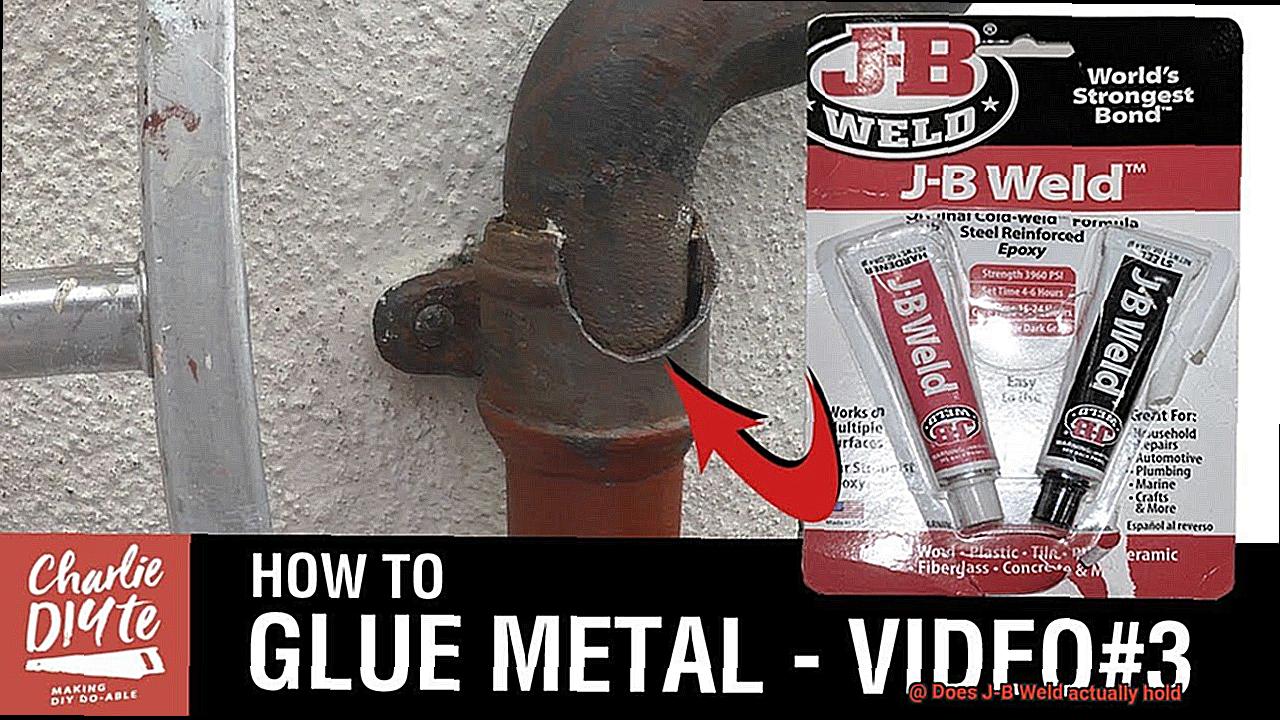
For heavy-duty applications, patience is key. Give your bond ample time to cure properly by leaving the bonded parts undisturbed for at least 24 hours or as per the product instructions. This guarantees exceptional strength and durability.
Seek Expert Advice:
When critical bonding needs arise, consult with professionals or experts in the field. Structural repairs and safety-critical applications require careful consideration. These experts can guide you on the suitability of J-B Weld and provide alternative solutions if needed.
Consider Environmental Factors:
Environmental conditions play a crucial role in bonding success. Take into account factors such as temperature ranges, moisture levels, chemical exposure, and vibrations. J-B Weld offers different formulations tailored to withstand various conditions. Choosing the right product for your specific requirements is vital for a secure bond.
Regular Inspection and Maintenance:
To ensure long-lasting performance in heavy-duty applications, conduct regular inspections. Keep an eye out for any signs of damage or deterioration and address them promptly. This proactive approach prevents potential failures and ensures the ongoing effectiveness of your bond.
LGCJGNkEpy8″ >
Conclusion
When it comes to the question of whether J-B Weld actually holds, the answer is a resounding yes. This incredible adhesive has proven time and time again that it can bond just about anything together with remarkable strength and durability. Whether you’re repairing a broken tool, fixing a leaky pipe, or even patching up a cracked engine block, J-B Weld is up to the task.
But don’t just take my word for it. Countless satisfied customers have put this mighty adhesive to the test and have been amazed by its holding power. From automotive enthusiasts to DIY enthusiasts, people from all walks of life have experienced firsthand the incredible bonding capabilities of J-B Weld.
What sets J-B Weld apart from other adhesives on the market is its unique two-part epoxy formula. When mixed together, these two components create a chemical reaction that forms an incredibly strong bond. This bond is not only resistant to extreme temperatures but also withstands vibrations and impacts without losing its grip.
Imagine having the confidence to tackle any repair job knowing that J-B Weld has got your back. It’s like having a superhero in your toolbox – always ready to save the day when things fall apart. With J-B Weld, you can trust that your repairs will hold up under pressure and stand the test of time.
So, next time you find yourself wondering if J-B Weld actually holds, remember this: it’s not just an ordinary adhesive; it’s a game-changer in the world of repairs. Say goodbye to temporary fixes and hello to long-lasting solutions. Give J-B Weld a try, and prepare to be amazed by its unmatched holding power.

